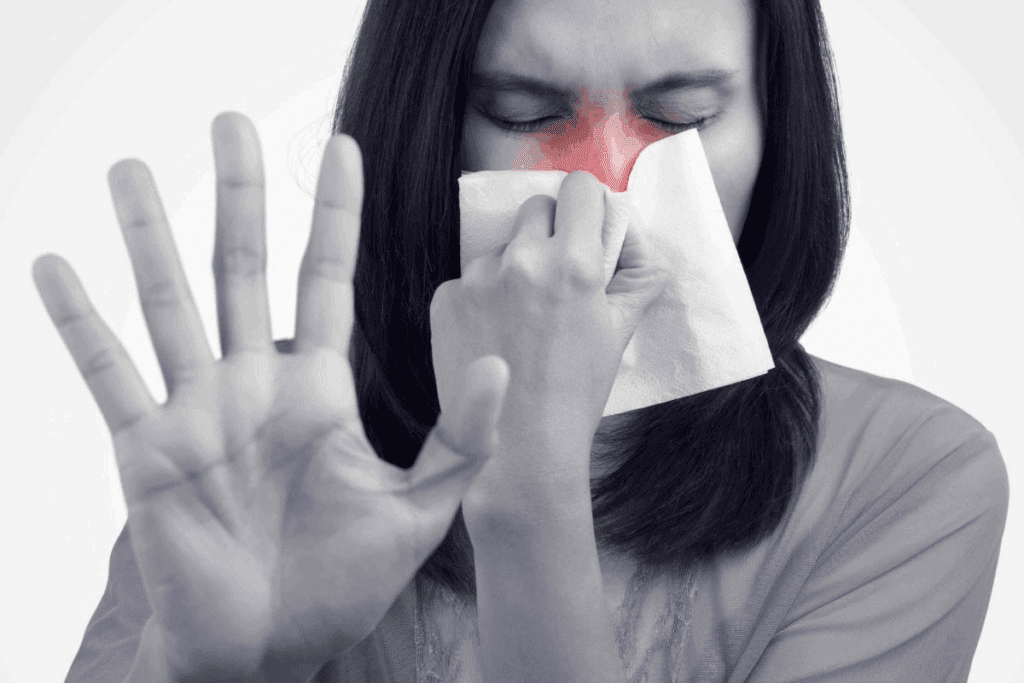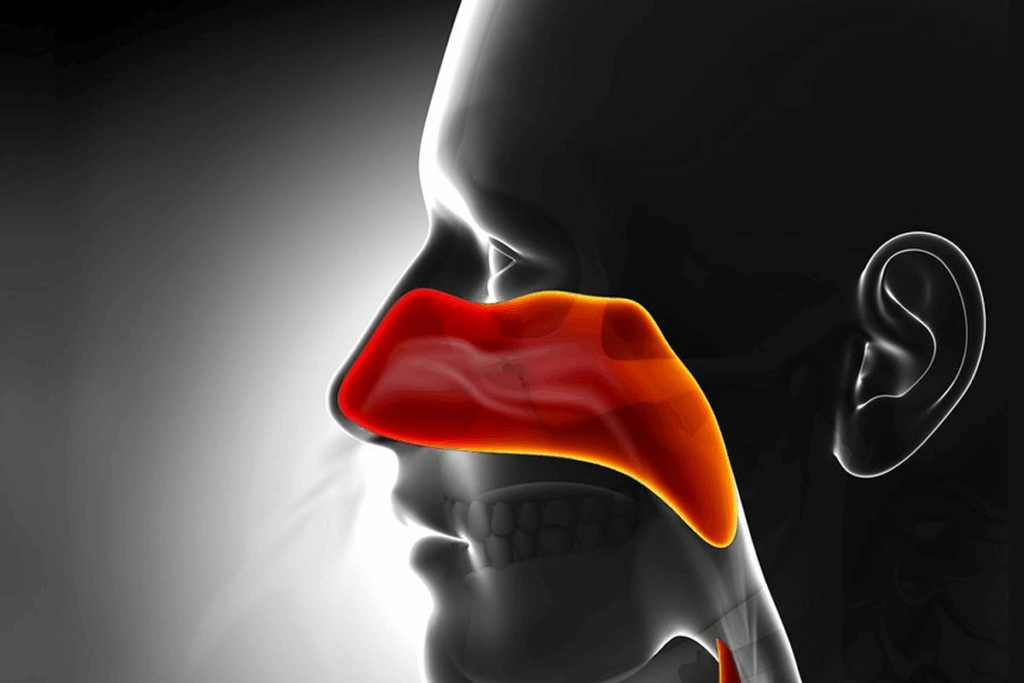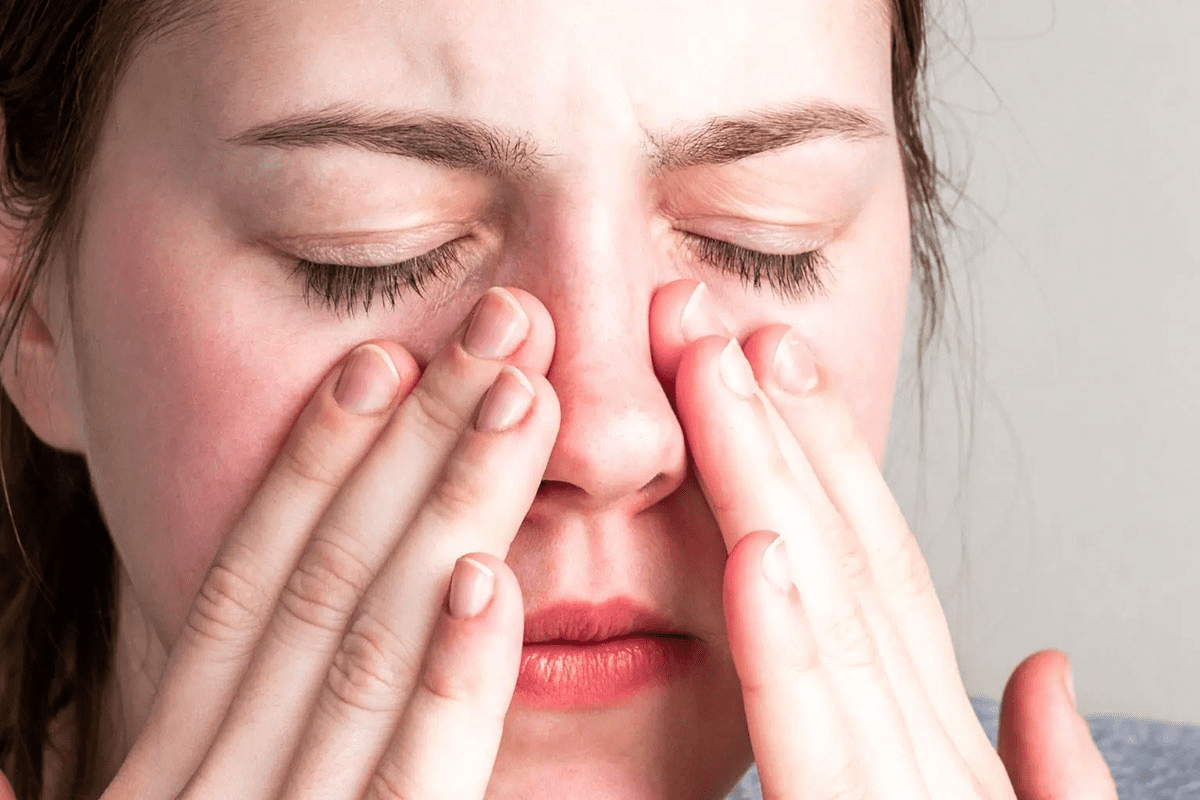Last Updated on October 31, 2025 by Saadet Demir

A complete guide to managing and treating chronic rhinosinusitis, the persistent inflammation of the sinuses and nasal passages.
At Liv Hospital, we know how much chronic rhinosinusitis affects daily life. It’s a big problem worldwide, causing lasting symptoms that can really hurt.
Chronic rhinosinusitis means long-term inflammation in the nose and sinuses. It lasts more than 12 weeks. Symptoms include stuffy nose, facial pain, and trouble smelling, making life hard.
Our guide looks at the best ways to treat chronic sinusitis. We help patients understand their options and manage their condition. We’ll cover what it is, its types, causes, symptoms, diagnosis, and treatments. This guide is a big help for those dealing with it.

Chronic rhinosinusitis (CRS) is a complex condition that affects millions worldwide. It’s important to understand its definition and how common it is. CRS is when the nasal and sinus mucosa are inflamed for more than 12 weeks.
Chronic rhinosinusitis is defined by a combination of clinical symptoms and objective findings. Symptoms include nasal congestion, facial pain, and sinus inflammation seen on radiographs. Doctors diagnose CRS by looking at patient history, physical exams, and tests like nasal endoscopy and imaging studies.
CRS is common worldwide, affecting 12.3% of people in the USA, 10.9% in Europe, and 13% in China. It has a big economic burden. In the USA, direct costs are about USD 10 to 13 billion a year. Indirect costs, like lost productivity, are over USD 20 billion annually.
CRS greatly affects patients’ quality of life. It impacts physical health, social function, and overall well-being. Symptoms like nasal discharge, facial pain, and loss of smell can be very hard to deal with. They can make people less productive and lead to more healthcare visits.
It’s key to understand CRS’s prevalence, economic impact, and quality of life effects. This knowledge helps in finding better ways to manage CRS. We’ll look at CRS’s types, causes, and treatments in the next sections.

CRS has different subtypes, each with its own traits and care needs. Knowing these differences helps in creating better treatment plans.
CRSsNP doesn’t have nasal polyps. It causes inflammation in the sinuses, leading to symptoms like nasal blockage and facial pain. Treatment focuses on reducing this inflammation.
CRSwNP has nasal polyps that block the nasal passages and sinuses. It has more severe symptoms and affects daily life more. Treatment aims to shrink the polyps and control inflammation.
AFRS is a unique CRS type caused by an allergic reaction to fungi in the sinuses. It mainly affects younger people and can damage the sinuses if not treated. Treatment includes antifungal meds and surgery to remove fungal debris.
The following table summarizes the key characteristics of the different CRS types:
CRS Type | Nasal Polyps | Key Characteristics | Common Treatment Approaches |
CRSsNP | Absent | Inflammation within sinuses, nasal congestion, facial pain | Anti-inflammatory medications, saline irrigation |
CRSwNP | Present | Nasal obstruction, loss of smell, significant impact on quality of life | Corticosteroids, nasal polyp removal, biologic therapies |
AFRS | Often Present | Allergic reaction to fungi, significant sinus damage | Antifungal medications, surgical debridement, corticosteroids |
Knowing the exact CRS type is key to choosing the right treatment. Tailoring treatment to the patient’s needs can greatly improve their life quality.
CRS is caused by a mix of inflammation, anatomy, environment, and genes. Knowing these factors helps us find better treatments.
CRS makes the nasal and sinus mucosa inflamed all the time. This inflammation comes from an immune system that doesn’t work right. It’s also because of an imbalance in cytokines and a bad reaction to things in the environment.
Eosinophils and other cells play a big part in CRS, mainly in those with nasal polyps.
Things like a crooked nasal septum or nasal polyps can block the sinuses. This stops them from draining and breathing well. It makes it easy for infections and inflammation to stay.
Things in the environment, like allergens and pollutants, can make CRS worse. Allergies are a big part of why CRS happens and how bad it gets.
People with CRS should try to stay away from things that make their symptoms worse.
Genes can make some people more likely to get CRS. Some genes might mess with how well the body’s barrier works or how it fights off inflammation.
Cause/Risk Factor | Description | Impact on CRS |
Inflammatory Factors | Chronic inflammation driven by immune system dysfunction | Contributes to CRS pathogenesis and severity |
Anatomical Abnormalities | Deviated nasal septum, nasal polyps | Impaired sinus drainage and ventilation |
Environmental Triggers | Allergens, pollutants, irritants | Triggers or exacerbates CRS symptoms |
Genetic Predisposition | Genetic polymorphisms affecting epithelial barrier or inflammation | Increases susceptibility to CRS |
It’s important to know the symptoms of chronic rhinosinusitis (CRS) for the right diagnosis and treatment. CRS causes long-lasting inflammation in the nasal and sinus areas. This leads to symptoms that can really affect your life.
The main symptoms of CRS are nasal congestion, facial pain or pressure, and loss of smell (anosmia or hyposmia). You might also have nasal discharge, headaches, coughs, and feel tired. These symptoms can be different for everyone.
Some people have these symptoms all the time, while others have them off and on.
To diagnose CRS, doctors look at your symptoms, medical history, and do tests. The guidelines for diagnosing CRS include:
Imaging is key in diagnosing CRS and seeing how much of the sinuses are affected. The main tool is the CT scan of the sinuses. It shows the sinuses in detail and can spot problems like polyps and thickened mucosa.
Other tests include nasal endoscopy for a direct look at the nasal and sinus areas. Allergy tests help find what might be causing your symptoms.
Diagnostic Test | Purpose | Findings in CRS |
Nasal Endoscopy | Direct visualization of nasal passages and sinuses | Mucopurulence, nasal polyps, mucosal edema |
CT Scan | Detailed imaging of sinus anatomy | Mucosal thickening, sinus opacification, anatomical variations |
Allergy Testing | Identify allergic triggers | Positive reactions to specific allergens |
If you’re dealing with symptoms that might be CRS, see a specialist. An otolaryngologist (ENT specialist) can do a full check-up. This includes nasal endoscopy and imaging to confirm the diagnosis and plan treatment.
Getting diagnosed and treated early can really help improve your symptoms and life quality with CRS.
Chronic Rhinosinusitis (CRS) treatment includes many medical options. These are chosen based on the condition’s severity and type. The main goal is to lessen inflammation, improve symptoms, and prevent complications.
Intranasal corticosteroids are key in treating CRS. They are known for their anti-inflammatory effects. These help reduce nasal congestion, sinus pressure, and discharge. Examples include fluticasone and mometasone.
Benefits: They manage symptoms well, are easy to use, and have a low risk of side effects.
Saline irrigation is a basic treatment for CRS. It involves rinsing the nasal passages with a saline solution. This removes debris, thins mucus, and improves sinus drainage.
Antibiotics are used when a bacterial infection is suspected. The choice between topical and systemic antibiotics depends on the infection’s severity and extent.
It’s important to use antibiotics wisely to prevent resistance.
Treatment | Use Case | Benefits |
Topical Antibiotics | Localized infection | Direct application, fewer side effects |
Systemic Antibiotics | Severe or widespread infection | Effective for acute bacterial infections |
Oral corticosteroids are used for short-term relief in severe CRS cases. They are used for significant nasal polyposis or when other treatments fail. They quickly reduce inflammation.
“Oral corticosteroids can offer significant relief for patients with severe CRS, but their use must be balanced against possible side effects.”
A leading otolaryngologist
CRS treatments are often combined and tailored for each patient. Knowing the benefits and possible side effects of each treatment is key for effective management.
When medical treatments don’t help, surgery might be needed. This is for those with chronic rhinosinusitis who don’t get better with medicine or have big problems with their sinuses.
Surgery is considered when symptoms last despite the best medicine. Or when there are big problems with the sinuses. We look at each case to decide if surgery is right.
FESS is a common surgery for CRS. It uses an endoscope to see inside the sinuses and remove blockages. This makes it easier for the sinuses to drain and lowers the chance of infections. It’s often done under general anesthesia and can be done as an outpatient.
Balloon sinuplasty is a less invasive option. It uses a balloon to open up the blocked sinus passage. This is good for those with milder sinus problems. It’s done under local anesthesia and has a quicker recovery than FESS.
After surgery, we focus on post-surgical care for a smooth recovery. This includes using saline nasal sprays, avoiding hard work, and follow-up visits. Good care after surgery can greatly improve its success. We give detailed instructions and support to help our patients through recovery.
Managing chronic rhinosinusitis (CRS) needs a deep understanding of its types. Each type, like CRS without nasal polyposis (CRSsNP), CRS with nasal polyposis (CRSwNP), and allergic fungal rhinosinusitis (AFRS), needs its own treatment plan.
For CRSsNP, treatment starts with medicine to fight inflammation and infection. Intranasal corticosteroids are key, helping to lower nasal swelling and ease symptoms. Saline irrigation also helps, by cleaning out nasal secretions and debris.
CRSwNP treatment is more complex because of nasal polyps. Oral corticosteroids can shrink polyps and reduce swelling. Sometimes, surgery like functional endoscopic sinus surgery (FESS) is needed for severe symptoms or when medicine doesn’t work.
AFRS is a unique CRS type caused by an allergic reaction to fungi in the nose. Treatment includes surgery to remove fungal debris and allergic mucin, along with medicine. Antifungal agents and allergy shots might also be used.
New treatments for CRS are being developed. Biologics, which target inflammation, are being studied for CRS, mainly CRSwNP. Clinical trials are ongoing to see if these treatments are safe and effective, giving hope for better care for CRS patients.
Managing Chronic Rhinosinusitis (CRS) well means taking care of yourself and making lifestyle changes. By making smart choices, you can feel better and live a better life.
One important part of managing CRS is controlling your environment. This means:
What you eat can help or hurt your CRS symptoms. Some foods can make things worse, while others can help. Think about:
Stress can make CRS symptoms worse. Good ways to handle stress include:
There are also home remedies that can help with CRS symptoms. These include:
By using these self-care tips and making lifestyle changes, people with CRS can manage their condition better. This can improve their overall health and well-being.
Living with Chronic Rhinosinusitis (CRS) can be tough. But, the right treatment and lifestyle changes can make a big difference. A good plan includes medical treatments, surgery, and taking care of yourself.
We talked about different treatments like nasal sprays and saline rinses. Surgery, like Functional Endoscopic Sinus Surgery (FESS), is also an option. It’s important to match the treatment to your CRS type.
Changing your lifestyle can also help. Things like controlling your environment, eating right, and managing stress are important. Working with your doctor and making smart choices can improve your life with CRS.
Managing CRS well is key to feeling better and living better. With the right treatment and care, you can learn to live well with CRS.
Chronic rhinosinusitis (CRS) is a long-lasting inflammation in the nasal and sinus areas. It lasts more than 12 weeks.
CRS has three main types. These are CRS without nasal polyposis (CRSsNP), CRS with nasal polyposis (CRSwNP), and allergic fungal rhinosinusitis (AFRS).
CRS is caused by inflammation, immune system issues, and anatomical problems. Environmental factors and genetics also play a role.
Symptoms include nasal congestion, discharge, facial pain, and loss of smell. These are key signs of CRS.
Doctors diagnose CRS by looking at symptoms, doing nasal endoscopy, and using CT scans.
Treatments include nasal sprays, saline rinses, antibiotics, and oral steroids. Surgery like FESS and balloon sinuplasty may also be needed.
Surgery is considered when medical treatments fail. It’s also needed for anatomical issues or complications like nasal polyposis.
Self-care and lifestyle changes are key. They include managing the environment, diet, stress, and using home remedies to control symptoms.
CRS is chronic but can be well-managed. A good treatment plan can greatly improve symptoms.
Chronic sinusitis and CRS are often confused. CRS is more accurate as it involves both nasal and sinus mucosa inflammation.
Yes, new treatments and trials are underway. They aim to target specific inflammatory pathways in CRS.
CRS can severely impact life. It causes fatigue, depression, and anxiety. It also affects social life and overall well-being.
National Center for Biotechnology Information. (2025). How to Treat Chronic Rhinosinusitis A Complete Guide. Retrieved from https://pmc.ncbi.nlm.nih.gov/articles/PMC7700823/
Subscribe to our e-newsletter to stay informed about the latest innovations in the world of health and exclusive offers!
WhatsApp us